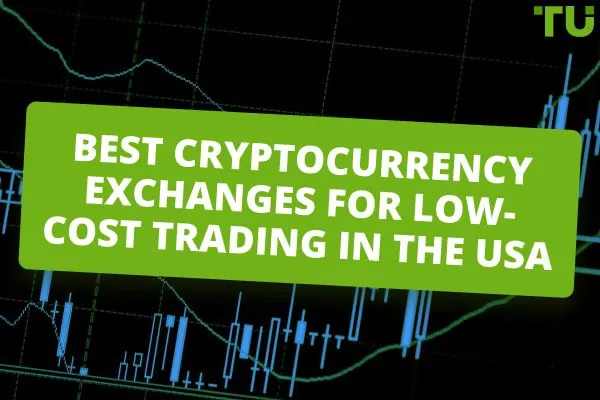Introduction:
American traders experience a yearly loss of $512 due to the trading fees charged for cryptocurrency transactions. Your portfolio could retain these costs which are currently paid as fees. The testing of numerous crypto platforms led me to discover the perfect low-fee zero-fee exchanges transforming crypto trading in 2025. These platforms serve professionals and beginners equally by enabling them to boost their returns through minimized expenses. The following message presents the least costly techniques for trading crypto across America.
13 Best Free Crypto Trading Platforms in America:
1. Understanding Zero-Fee Crypto Trading
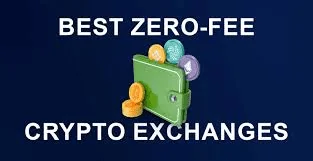
Users can find zero-fee crypto trading to be a fantasy since this method allows transactions without charging any fees to users. But is it really that simple? A trading platform that offers zero-fee services avoids direct commissions for clients although it operates expenses for users through different methods.
The financial profits of many platforms stem from spreads when pricing buy and sell orders against each other while they also charge withdrawal fees and market makers for their order flow. Trading participants might restrict free trading to selected pairs or need to maintain their exchange native token.
Hidden trading expenses will gradually diminish your profits over extended periods, especially for people who engage in trading regularly. The promise of feeless trading must be analyzed with caution since the actual expenses could be concealed differently.
2: Top Zero-Fee Trading Platforms
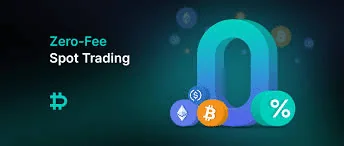
Some best crypto trading platforms deliver completely free operations but others charge users through higher spread variations or withdrawal costs. The main distinctive elements between platforms include their support for particular cryptocurrencies and their specific features such as staking opportunities and futures trading but also encompass the user-friendliness aspect.
Several platforms exist that target users with basic needs and other platforms provide complex features. Protection of client assets stands paramount so examine encryption levels to enable 2FA security and confirm insurance coverage. The perfect platform choice requires finding a balance between fee reductions and how easy it is to use combined with security measures.
Looking for zero-fee crypto trading? Here are some crypto platform’s lowest fees:
MEXC _ enables traders to access spot and futures trading without maker fees together with 2,500+ supported cryptos and copy trading and staking options.
Lykke – Swiss-based exchange with zero-commission crypto and fiat trading, but limited coin selection.
Robinhood – Beginner-friendly, zero-fee crypto, stock, and ETF trading, but limited crypto options and no private wallet keys.
Nexo – Fee-free crypto trading with high liquidity, plus interest-earning wallets and crypto-backed loans.
Cautiously review fee-free platforms since withdrawal fees and other expenses might exist and confirm the platform satisfies your security standards and usability criteria.
Top Zero Fee Crypto Exchanges Compared:
| Exchange | Our Rating | Zero-Fee Feature | Supported Coins | Additional Features |
| MEXC | 9.5/10 | 0% for spot and futures makers | 2,500+ | Perpetual futures trading, copy trading, and staking services |
| Binance | 9/10 | No-fee crypto-to-crypto convert | 400+ | Launchpad, derivatives market, options trading, Binance Pay |
| Lykke | 8.5/10 | Zero trading fees and low buy-sell spreads | 20+ | Licensed in the EU, low spreads, and Lykke Wallet |
| Phemex | 8/10 | 0% fee for premium members | 275+ | Web3 portal, Launchpool, mock trading, trading bots, and more |
| Deribit | 7.5/10 | 0% for spot and 0% maker fees for futures | 41+ | Futures and options trading |
3: Best Low-Cost Trading Options

Searching for low-cost trading platforms remains beneficial even if zero-fee trading is not possible because it leads to substantial financial savings in the future. The trading fees at certain exchanges remain low yet their fee systems operate differently since some use volume thresholds while others reduce costs when using exchange tokens or setting maker orders.
Leveling up your knowledge about costs from different trading volumes enables you to select the most cost-effective platform for your methodology. Special promotions on the platforms often consist of payment discounts which new users gain and users who refer others can earn bonuses. Investigating exchanges enables traders to lower business expenses and retain more financial gains.
4: Security Features and Protection

Security constitutes the entire essence of trading crypto. Excellent crypto platforms combine effective security measures including two-factor authentication (2FA) for control access and cold storage protection where funds remain offline to avoid hackers. Although these exchanges offer breach insurance coverage you should carefully read the terms and conditions of such protection.
This platform demonstrates trustworthiness through regulatory compliance which makes sure it obeys industry standards. Checking past security breaches should be your first step before joining any exchange service. How did they handle them? Your assets will remain secure through basic investigative work about their protection.
5: User Experience and Interface

A smooth user experience can make or ruin your cryptocurrency trading career. Trading while on the go is made simple by the leading platforms’ user-friendly interfaces, which are available on both desktop and mobile apps. While a simple account setup guarantees that you may begin trading right away, sophisticated charting tools and analysis capabilities assist traders in making well-informed selections.
Additionally, prompt customer service by phone, email, or live chat can be invaluable when problems occur. A well-designed platform aims to make trading easy, effective, and stress-free—it’s not just about looks.
6: Trading Features and Tools
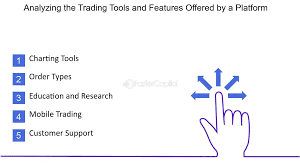
Professional trading platforms include more than just buying and selling; they also offer sophisticated order types, charting capabilities, and learning materials. While integrated analysis tools give traders an advantage, API access and trading bot compatibility aid in automating methods. When it comes to making wise, effective deals, the correct characteristics are crucial.
Trading tools help traders make better decisions, automate strategies, and manage risk effectively Key tools include:
- Order Types—Market, limit, stop-loss, and trailing stop orders for better trade execution.
- Charting & Analysis—Indicators like RSI, MACD, and Bollinger Bands to track price movements.
- Trading Bots & Automation—API access and bots to execute trades based on set parameters.
- Educational Resources—Tutorials, webinars, and articles for continuous learning.
- Risk Management Tools—Portfolio tracking, P&L calculators, and alerts to minimize losses.
The right trading tools can give you an edge, whether you’re a beginner or a pro.
7: Deposit and Withdrawal Methods
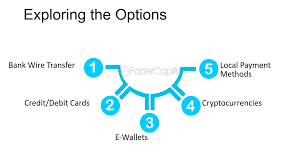
Funding your crypto account and cashing out should be simple, but the details matter. Different platforms support various payment methods, from bank transfers and credit/debit cards to PayPal and crypto deposits. Processing times can vary—some transactions are instant, while others take days. Withdrawal limits and fees also differ; some exchanges charge a flat fee, while others adjust based on network congestion. If seamless bank integration is important, check whether the platform supports direct deposits and withdrawals. Understanding these factors upfront can save you time, money, and frustration down the road.
8: Platform Reliability and Performance
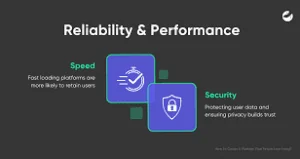
A reliable trading platform can mean the difference between seizing an opportunity and missing out. High server uptime ensures the platform stays online, even during volatile market conditions. A fast trading engine helps execute orders instantly, reducing slippage and frustration.
Mobile app performance is just as crucial, allowing smooth trading on the go. The best platforms can handle peak trading hours without lag, preventing crashes when activity surges. Regular maintenance is necessary, but well-managed platforms minimize downtime. A fast, stable, and responsive platform keeps your trading experience seamless and stress-free.
9: Regulatory Compliance and Licensing

Regulatory compliance is key to a secure and trustworthy trading experience. A platform’s US regulatory status determines whether it follows federal and state laws, affecting where it can operate. Some exchanges aren’t available in every state due to licensing restrictions. Know Your Customer (KYC) requirements add a layer of security by verifying user identities, though they may impact privacy.
Many platforms also offer tax reporting tools to simplify filings. Legal protections vary, but regulated exchanges provide more safeguards for users. Checking a platform’s compliance can help ensure your funds and data stay secure.
10: Customer Support and Resources

Good customer support can make a huge difference in your trading experience. The best crypto platforms offer multiple support channels—live chat, email, and phone—so you can get help when you need it. Fast response times are crucial, especially during market volatility or technical issues. Beyond direct support, strong educational materials, community forums, and troubleshooting guides help traders find answers independently. Whether you’re a beginner or an experienced trader, having access to reliable resources ensures a smoother and more confident trading journey.
11: How to Choose the Best No-Fee Exchange?
Choosing the best no-fee crypto exchange requires careful consideration of several factors:
- Zero-Fee Buying and Selling: The exchange must support no-fee crypto trading. You can check for its trading fees, deposit fees, withdrawal fees, or service fees.
- Security Measures: Look for platforms that use cold storage, offer two-factor authentication, offer transparency, and have a strong track record of protecting user funds.
- Reputation: Read reviews and check if the exchange has a history of good customer service and reliability. Trusted exchanges are less likely to have issues.
- User Experience: Choose an exchange with a user-friendly interface. It should be easy to navigate, especially if you are new to trading. Look for clear instructions and helpful resources.
- Variety of Crypto Assets: Ensure the zero-fee crypto exchange offers the digital assets you want to trade. Some exchanges have a wider range of coins and tokens than others.
- Liquidity: High liquidity means you can buy or sell assets quickly without affecting the market price too much. This is important for getting fair prices and completing trades swiftly.
- Deposit and Withdrawal Options: Check the methods available for depositing and withdrawing funds. Look for options that are convenient and have low or no fees.
12: How To Trade Crypto With No Fees?
Here’s how to trade crypto with no fees:
- Choose a Zero-Fee Exchange: Start by creating an account on a crypto exchange that offers zero-fee trading or zero-fee markets, such as MEXC, Binance, or Deribit. These exchanges are known for providing various trading pairs with no fees or very low crypto trading fees.
- Complete KYC: KYC stands for “Know Your Customer”. This process helps exchanges comply with regulations and prevent fraud. Submit the required documents, which typically include a government-issued ID (passport or driver’s license) and proof of address (utility bill or bank statement).
- Deposit funds: Once your account is verified, navigate to the “Deposit” or “Funds” section. Choose your preferred deposit method (bank transfer, credit card, or cryptocurrency). Follow the instructions to transfer funds to your exchange account. Be aware of any deposit fees or minimum deposit amounts.
- Trade crypto without fees: Look for trading pairs that offer zero fees. These are often listed as “0% maker/taker fees” or “fee-free trading.”. Place your order using the exchange’s trading interface. Choose between market orders (instant execution at the current price) or limit orders (execution at a specific price). Monitor your trades and adjust your strategy as needed.
13: Types Of Cryptocurrency Trading Fee

lowest trading fees Crypto exchange Maker/taker fees are the most prevalent crypto exchange fees. The trading crypto platform takes a tiny portion of every deal you make on a centralized exchange while buying or selling cryptocurrency. This aids in the growth and payment of operational expenses for most crypto exchanges with the lowest crypto trading fees.
Anyone who places a limit order and increases the trading pair’s liquidity is called a “Maker.” A “Taker,” on the other hand, is someone who buys from the market at the current price. Usually, to do this, market orders are placed, which instantly “take” assets and liquidity off the market. Makers often pay significantly less in fees than takers.
Exchanges that deal in cryptocurrencies reward large-volume traders with reduced maker and taker fees based on the value you bring to the market. Both sides benefit from this; exchanges generate money from heavy trading activity, while market makers pay minimal fees for offering deep liquidity and large volume.
Token holders of native utility are eligible for fee reductions from some global crypto exchanges. For instance, traders may trade cryptocurrencies on Binance at a discount if they own a certain quantity of BNB. A cheap cryptocurrency exchange will help you trade without extra costs.
Conclusion:
Best Lowest To No Cost Crypto Trade Platforms In America all information about this has been given with detail. Trading crypto doesn’t have to cost a fortune! By choosing the right platform from our carefully curated list, you can significantly reduce or eliminate trading fees while enjoying professional-grade features. Remember, the best platform for you depends on your specific trading needs and volume. Ready to start trading smart? Pick one of these cost-effective platforms and begin your journey today. Your wallet will thank you!
FAQs:
- Q.1: What are the best places to trade crypto without fees?
- Ans: Some of the best places to trade crypto without fees include MEXC, Binance, and Lykke. MEXC offers zero fees for both makers and takers in spot trading, making it a top choice for cost-conscious traders. Binance provides a no-fee “Convert” feature, allowing users to swap between cryptocurrencies without any transaction costs. Lykke, a UK-based exchange, also offers fee-free trading for both crypto and fiat transactions, with the added benefit of low spreads between buy and sell prices.
Q.2: Which crypto exchange has the lowest Bitcoin trading fees?
- Ans: MEXC is known for offering some of the lowest Bitcoin trading fees in the market. For spot trading, MEXC provides a true zero-fee experience for both makers and takers, meaning you can buy and sell Bitcoin without any transaction costs. This makes MEXC an attractive option for traders looking to minimize their expenses. Plus, MEXC offers low fees for futures trading, with a 0% maker fee and a minimal 0.01% taker fee.
Q.3: What determines the fees on cryptocurrency exchanges?
- Ans: Fees on cryptocurrency exchanges are influenced by several factors including transaction size, trading volume, market conditions, and whether you are a maker or taker. Additionally, the user’s trading frequency and membership tier can affect fee rates, with higher-volume traders often enjoying lower fees.
Q.4: Do crypto exchanges offer different fee structures for different types of users?
- Ans: Yes, most cryptocurrency exchanges offer varied fee structures based on user activity and volume. Regular users typically encounter standard fees, while high-volume traders or those participating in a VIP or tiered membership can benefit from reduced fees. Additionally, market makers—who provide liquidity to the market—often enjoy lower fees compared to market takers. This incentivizes maintaining a robust and liquid trading environment on the platform.
Q.5: How can I reduce the fees I pay on crypto exchanges?
- Ans: You can reduce fees by increasing your trading volume to qualify for lower fee tiers, using exchange-native tokens to pay for fees, and participating in referral or loyalty programs that offer fee discounts. Also, choosing your transaction types wisely (e.g., limit vs. market orders) can lower costs.
Q.6: Are there hidden fees I should be aware of when trading cryptocurrencies?
- Ans: Beyond trading fees, be aware of withdrawal fees, deposit fees (rare but sometimes applicable), and network fees for blockchain transactions. Some exchanges also charge inactivity fees or higher fees for small account balances.
Q.7: How do fees differ between spot trading and futures trading on exchanges?
- Ans: Generally, spot trading fees are fixed percentages per transaction, while futures trading with crypto can involve additional costs such as funding rates, and margin costs. Futures fees are often lower but require understanding the implications of trading BTC with leverage and overnight positions.
Q.8: What impact do withdrawal fees have on my crypto investments?
- Ans: Withdrawal fees can vary significantly between exchanges and can impact your returns, especially if you make frequent withdrawals. Some exchanges charge a flat fee per withdrawal, while others adjust fees based on network conditions.
Q.9: Can using a platform’s native token reduce my trading costs?
- Ans: Yes, many exchanges offer significant discounts on trading fees when you use their native tokens. For example, Binance offers a discount when fees are paid with BNB, and KuCoin provides discounts for using KCS tokens.
Q.10: What should I consider besides fees when choosing a cryptocurrency exchange?
- Ans: Besides fees, consider security features, user interface, customer support, regulatory compliance, available cryptocurrencies, and withdrawal options. It’s also important to review the exchange’s reputation within the community and its historical performance during high volatility periods.
